Related Research Articles
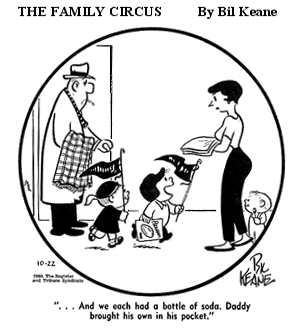
The Family Circus is a syndicated comic strip created by cartoonist Bil Keane and, since Keane's death in 2011, is written, inked and rendered (colored) by his son Jeff Keane. The strip generally uses a single captioned panel with a round border, hence the original name of the series, which was changed following objections from the magazine Family Circle. The series debuted on February 29, 1960 and has been in continuous production ever since. According to publisher King Features Syndicate, it is the most widely syndicated cartoon panel in the world, appearing in 1,500 newspapers. Compilations of Family Circus comic strips have sold more than 13 million copies worldwide.

Little Lulu is a comic strip created in 1935 by American author Marjorie Henderson Buell. The character, Lulu Moppet, debuted in The Saturday Evening Post on February 23, 1935, in a single panel, appearing as a flower girl at a wedding and mischievously strewing the aisle with banana peels. Little Lulu replaced Carl Anderson's Henry, which had been picked up for distribution by King Features Syndicate. The Little Lulu panel continued to run weekly in The Saturday Evening Post until December 30, 1944. A later variation of the character is Little Audrey from Harveytoons.
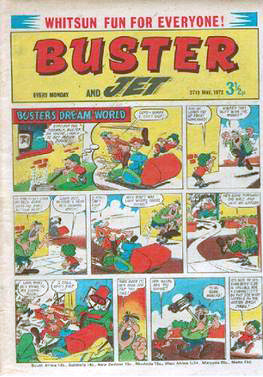
Buster was a British comic which began publication in 1960, originally published by IPC Magazines Ltd under the company's comics division Fleetway, then by Egmont UK Ltd under the same imprint until its closure in 2000. Despite missing issues due to industrial action during its run, the comic published 1,902 issues in total. The comic carried a mixture of humour and adventure strips, featuring the title character Buster and a host of other characters.
Nipper was a short-lived British comic book magazine, published between 31 January to 12 September 1987. Unlike most British comics by this time, which had A4 paper size, this was an A5 comic, which meant it was half the size of all the others, hence the name 'Nipper'. Nipper ran for 16 Issues, had just one holiday special and just one annual in 1988. By the time of its last issue, however, it had become an A4 comic like the others. After that it merged with Buster.
Rainbow Brite is a media franchise by Hallmark Cards, introduced in 1984. The animated Rainbow Brite television series first aired in 1984, the same year Hallmark licensed Rainbow Brite to Mattel for a range of dolls and other merchandise. A theatrical feature-length film, Rainbow Brite and the Star Stealer, was released by Warner Bros. in 1985. The franchise was rebooted in 2014 with a three part mini-series released on Hallmark's online streaming video service, Feeln. A line of new merchandise by Hallmark online and in its shops debuted in 2015.
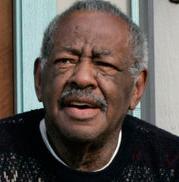
Morris Nolton Turner was an American cartoonist. He was creator of the strip Wee Pals, the first American syndicated strip with a racially integrated cast of characters.
Raymond Curtis Billingsley is an African American cartoonist, best known for creating the comic strip Curtis. It is distributed by King Features Syndicate and printed in more than 250 newspapers nationwide.
Charles Boyce, is an American cartoonist known for his syndicated comic panel Compu-toon. Boyce is also known for creating the KeyPad Kid, a cartoon character used in public affairs awareness programs for training within the telecommunication industry.
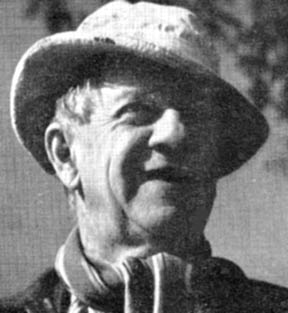
Clare Victor Dwiggins was an American cartoonist who signed his work Dwig. Dwiggins created a number of comic strips and single-panel cartoons for various American newspapers and newspaper syndicates from 1897 until 1945, including his best-known strip, the long-running School Days.

Donald Fullilove is an American actor, who has had a role in numerous projects over the course of his forty-year plus career in both films and television. he currently resides in Burbank California with his wife Tuluv Price Fullilove
Morrie is a masculine given name, often a diminutive form (hypocorism) of Morris or Maurice. It may refer to:
Morrie Brickman was a cartoonist. His nationally syndicated comic strip The Small Society was published in over 300 papers, including 35 foreign publications.
The Register and Tribune Syndicate was a syndication service based in Des Moines, Iowa, that operated from 1922 to 1986, when it was acquired by King Features to become the Cowles Syndicate affiliate. At its peak, the Register and Tribune Syndicate offered newspapers some 60 to 75 features, including editorial cartoonist Herblock, comic strips, and commentaries by David Horowitz, Stanley Karnow, and others.
Luther is an American syndicated newspaper comic strip published from 1968 to 1986, created and produced by cartoonist Brumsic Brandon Jr. The series, about an African-American elementary-school child, was the second mainstream comic strip to star an African-American in the lead role, following Dateline: Danger! (1968-1974), the first to do so. Another predecessor, Wee Pals (1965-2014), featured an African-American among an ensemble cast of different races and ethnicities.
Quincy is an American syndicated newspaper comic strip published from July 13, 1970 to October 4, 1986, created and produced by cartoonist Ted Shearer. The series, about an African-American boy being raised by his grandmother in Harlem, was one of the earliest mainstream comic strips to star an African American in the lead role, following Dateline: Danger! (1968-1974) and Luther (1969-1986). Another predecessor, Wee Pals, features an African-American among an ensemble cast of different races and ethnicities.
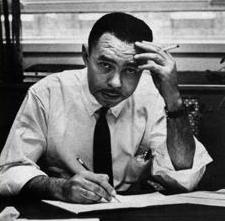
Thaddeus Shearer was an African-American advertising art director and cartoonist whose 1970–1986 Quincy was one of the earliest mainstream comic strips to star an African American in the lead role.
The Public Ledger Syndicate was a syndication company operated by the Philadelphia Public Ledger that was in business from 1915 to circa 1950. The Ledger Syndicate distributed comic strips, panels, and columns to the United States and the United Kingdom, Ireland, Canada, Sweden, New Zealand, and Australia. The syndicate also distributed material from the Curtis Publishing Company's other publications, including The Saturday Evening Post, Ladies' Home Journal, and The Country Gentleman.
General Features Corporation was a syndication service that operated from 1937 to 1974. It was founded by S. George Little and billed itself in the early 1950 as "America's Leading Independent Syndicate." By 1967, General Features distributed 80 columns, comic strips, and editorial features.
The New York World was one of the first newspapers to publish comic strips, starting around 1890, and contributed greatly to the development of the American comic strip. Notable strips that originated with the World included Richard F. Outcault's Hogan's Alley, Rudolph Dirks' The Captain and the Kids, Denys Wortman's Everyday Movies, Fritzi Ritz, Gus Mager's Hawkshaw the Detective, Victor Forsythe's Joe Jinks, and Robert Moore Brinkerhoff's Little Mary Mixup.
References
- ↑ Holtz, Allan. "Which Newspaper Strip Was Distributed by the Most Syndicates?", Stripper's Guide (July 15, 2019).
- ↑ "Wee Pals" at Don Markstein's Toonopedia. Accessed January 27, 2014. Archived from the original on January 12, 2015.
- 1 2 3 Ross, Martha (January 27, 2014). "Morrie Turner: Pioneering 'Wee Pals' cartoonist, dies at 90". Contra Costa Times . Contra Costa County, California. Archived from the original on March 6, 2014.
- ↑ Hamlin, Jesse (September 13, 2009). "Wee Pals retrospective at S.F. library". San Francisco Chronicle . Archived from the original on June 10, 2014.
- 1 2 Cavna, Michael (January 31, 2014). "RIP, Morrie Turner: Cartoonists say farewell to a friend, a hero, a 'Wee Pals' pioneer". The Washington Post . Archived from the original on 2015-04-27. Retrieved 2017-09-18.
- 1 2 Jones, Steven Loring. "From 'Under Cork' to Overcoming: Black Images in the Comics," Ethnic Images in the Comics (The Balch Institute for Ethnic Studies, 1986), p. 27.
- 1 2 "About Morrie Turner". Creators Syndicate. Archived from the original on May 12, 2013. Retrieved January 27, 2014.
Within three months of King's death, the strip was appearing in over 100 newspapers nationwide.
- ↑ "Wee Pals by Morrie Turner for March 22, 2021". GoComics. Retrieved 2022-08-31.
- ↑ Woolery, George W. (1983). Children's Television: The First Thirty-Five Years, 1946-1981. Scarecrow Press. pp. 160–161. ISBN 0-8108-1557-5 . Retrieved 14 March 2020.
- ↑ Perlmutter, David (2018). The Encyclopedia of American Animated Television Shows. Rowman & Littlefield. pp. 337–338. ISBN 978-1538103739.
- ↑ Erickson, Hal (2005). Television Cartoon Shows: An Illustrated Encyclopedia, 1949 Through 2003 (2nd ed.). McFarland & Co. pp. 468–469. ISBN 978-1476665993.